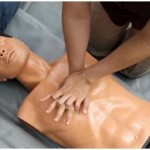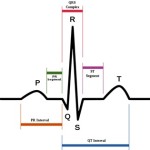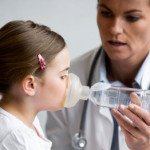Symptoms Of Pneumonia
Symptoms of bacterial pneumonia start usually suddenly, during an upper respiratory infection such as cold or flu. The non bacterial pneumonia symptoms are milder and come gradually in time and they are caused by virus infection.
The common symptoms of pneumonia can be milder or severe; in any case you should check your health care provider for medical examination and treatment. The symptoms include pain in the chest and difficulty while breathing, accompanied by a cough and production of mucus (that can be yellow-green-brown), feeling unwell, feeling fatigue and loss of appetite, high body temperature and fever with sweating and shivering, and other general symptoms that may not be present like raised heartbeat, headache, stomachache, vomiting, pain in muscles and etc. If some of the symptoms are more severe, they can cause confusion and delirium to the patient and in that case a medical assistance is required.
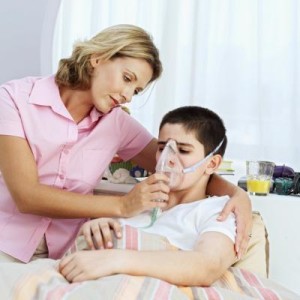 The viral pneumonia starts with symptoms similar to influenza or flu. The symptoms include dry cough, general weakness, fatigue, muscle pain and headache and high body temperature with fever. The symptoms increase gradually and additionally, small amounts of mucus are produced.
The viral pneumonia starts with symptoms similar to influenza or flu. The symptoms include dry cough, general weakness, fatigue, muscle pain and headache and high body temperature with fever. The symptoms increase gradually and additionally, small amounts of mucus are produced.
Diagnosis of Pneumonia
A diagnose of pneumonia is done in the doctor’s office and it includes listening with a stethoscope to examine the lungs and the breathing, while you inhale/exhale, and measuring the body temperature. Other test that can show if it is a case of pneumonia include blood test to check the white blood cells count that indicates inflammation process in the organism, c-reactive protein (CRP) to check if the infection is bacterial or viral, and taking a sputum culture (that is the coughing mucus from the lungs), as a material for microbiology test, that can indicate the bacteria that is causing the pneumonia. With the given results, the doctor can prescribe a proper medication and treatment. Sometimes it is recommended to do an x-ray imaging if your doctor suspects 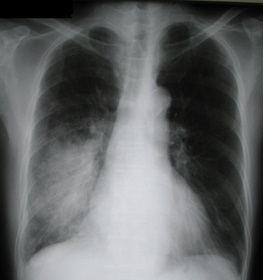 pneumonia and can’t be sure from the other tests. This way the doctor can additionally check how much of the lungs are affected with the infection.
pneumonia and can’t be sure from the other tests. This way the doctor can additionally check how much of the lungs are affected with the infection.
Pneumonia Causes
The most common cause for bacterial pneumonia is Streptococcus pneumoniae, but pneumonia may also cause other types, such as Haemophilus influenzae, Staphilococcus Aureus, Mycoplasma pneumoniae, Chlamidophila pneumoniae, or Legionella pneumophila (very uncommon type of pneumonia). The viral pneumonia is caused by the RSV (respiratory syncytial virus), rhinoviruses, coronaviruses, adenovirus, parainfluenza and influenza virus. The infection’s common way to enter the body is the respiratory system and pneumonia is not usually passed from a person to person, but it is sensitive to be around persons with higher risk like older people, children, babies or people with lower immunity, or people with other health conditions such as aids, cancer or other respiratory infection. Viruses make the body more susceptible for additional bacterial infection.
Less commonly cause can be presence of other microorganism, such as fungi and parasites.
Treatment for Pneumonia
The treatment depends on the type of infection whether it is acute or chronic, and whether it is bacterial or viral. The goal is to treat the infection, soothe the symptoms, prevent complications and cure the patient.
If the infection is a viral pneumonia, antibiotics will not work. In this case antiviral medications may be used, or home-care measures can be taken, like drinking a lot of fluids to loosen the throat and improve blood circulation, get a lot of rest during the day, control the symptoms like fever, headache or vomiting, with proper medications. Taking vitamins and have a proper diet, in order to improve the immune response, is also essential in the recovery. If the symptoms are more severe, the patient requires hospital care and additional medication.
If the infection is a bacterial pneumonia, then antibiotic therapy will work. The treatment includes medications that are shown in the sputum antibiotic diagram and that means that some bacteria will be resistant to some antibiotics and some antibiotics will have bigger effect in the treatment than others. After completing the therapy that usually lasts up to ten days, the symptoms will improve from 1 to 3 weeks, don’t rush the recovery. If you are a smoker, quit smoking while recovering.
Complications may occur in elderly patients, and patients with underlying health problems. The complications include empyema, lung abscess, acute respiratory distress syndrome, sepsis and etc.
Prevention of Pneumonia
To help the group of people with higher risk rate, there is vaccination against pneumonia. Also, one should practice good hygiene to stop spreading the infection, cover the mouth while coughing and wash hands more frequently, use tissues and recycle them properly. Smoking is also a big risk factor for pneumonia.


